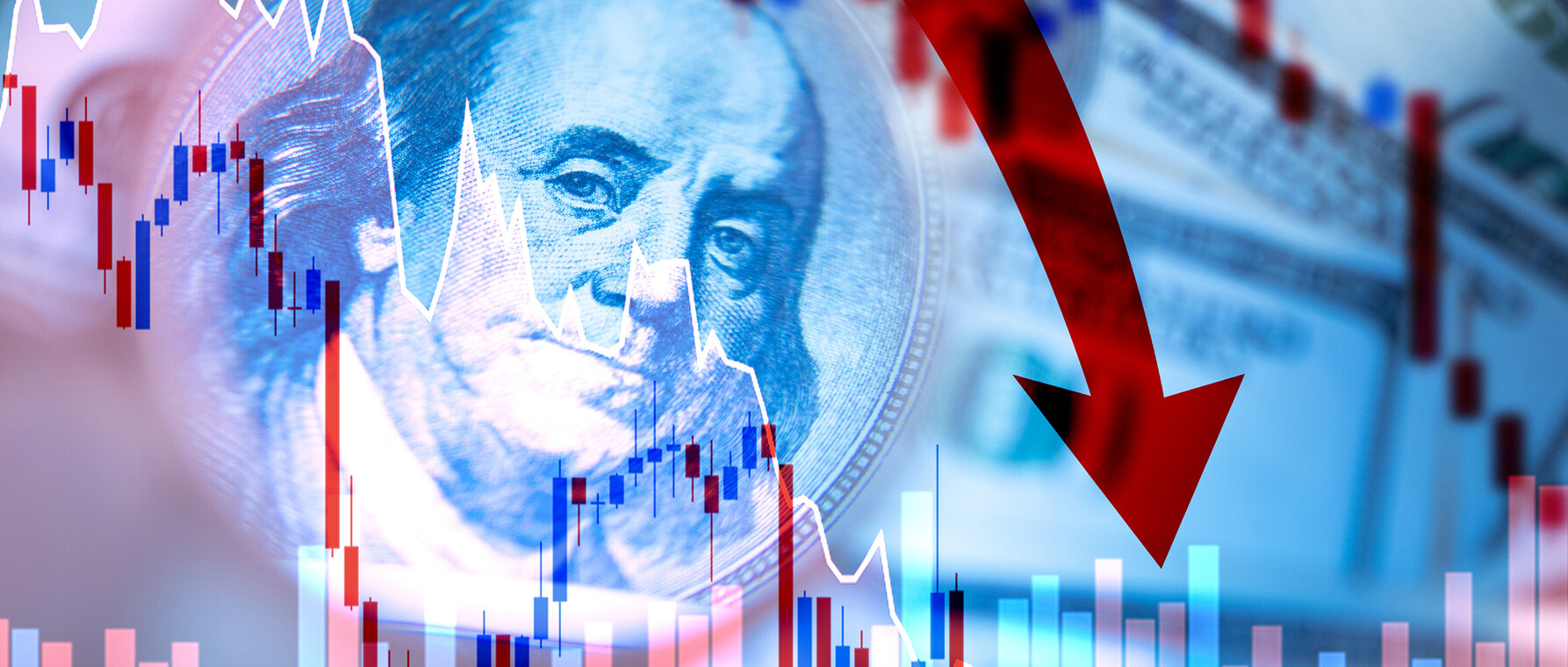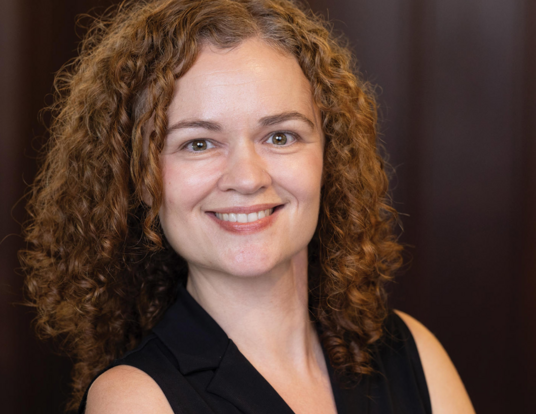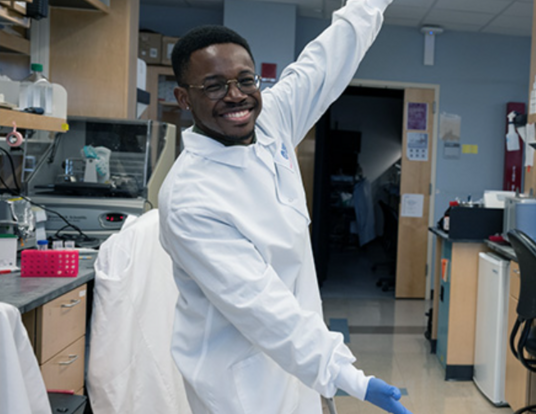Less than Zero
Debt and banking in an age of low-interest rates

Research at Risk: Since World War II, universities have worked with the federal government to create an innovation ecosystem that has yielded life-changing progress. Now much of that work may be halted as funding is withdrawn. Find out more about the threats to medical, engineering, and scientific research, as well as how Harvard is fighting to preserve this work—and the University's core values.
The global pandemic has ushered in a global recession. Public health measures employed by countries around the world to mitigate the spread of the coronavirus have dramatically lowered economic activity, leaving millions unemployed and many businesses closed. As government relief packages run out, debt mounts, and the crisis goes on, policymakers are looking for new tools to manage the downturn and promote recovery.
This unique moment in history prompted GSAS student Kathryn Holston to take a year’s leave of absence—a bold move for a PhD candidate—in order to have a real impact. Now at the World Bank on the team of Chief Economist Carmen Reinhart, a professor at Harvard Kennedy School, Holston is part of an effort to learn more about debt crises so that governments can see them coming and cope better with them when they hit. She spoke to GSAS Communications about her work, her doctoral research on natural interest rates, and why central bankers in the US are looking for new tools to keep the economy afloat.
GSAS: How did you decide to take a leave of absence to work at the World Bank?
Kathryn Holston: I've always been interested in international economics and ways to improve the economy to avoid bad outcomes like debt, banking, and financial crises, which are top of mind right now because of the economic impact of COVID-19. I worked at the Federal Reserve (“the Fed”) before I came to GSAS, so I also wanted to stay involved in the real-world application of economic research while I was getting my PhD. I talked with my advisors about taking a year off if I could do something that was related to my research and was rooted in the policy space. Last May, Carmen Reinhart, who I knew at Harvard, was appointed chief economist at the World Bank and I learned that there would be a position on her team. I applied and kind of went from there.
GSAS: Describe the project you’re working on with Professor Reinhart this year.

Holston: We’re tracking and identifying where banking and debt crises are taking place around the world. Debt crises can be external or domestic. Often the debt crises that we’re talking about arise when a country can’t pay back its debts to foreign creditors. That’s an external sovereign debt crisis.
Banking crises involve significant distress in a country’s banking system. Importantly, these two types of crises can be deeply intertwined, with fragility in a country’s banking system leading to problems on the sovereign debt side, and vice versa.
While the COVID-19 crisis presents new challenges, economic crises generally have common elements. At the World Bank, we’re trying to get a better handle on what those are in order to understand how current crises might unfold, how we can lessen the severity of new and ongoing crises, and how we can help countries achieve a sustainable resolution more quickly.
GSAS: Given the impact of the pandemic on the global economy—and the spending that governments have done to cope with it—are you concerned about a global debt crisis?
Holston: The International Monetary Fund and the World Bank are both tracking where they’re seeing debt distress and other fragilities in national economies. Their Debt Sustainability Analysis categorizes countries’ risks of debt distress as low, medium, high, or already in distress. I don't want to comment on the cases of any particular country, but I think that the scale of the pandemic’s economic impact is striking. We are seeing many countries at high risk of, or already in, debt distress, and there is potential for trouble in the future.
GSAS: What are some of the warning signs?
Holston: There's no one indicator that says, “We're in this type of crisis right now,” so we have to look at a wide range of factors. For banking distress, we can look at things like increases in non-performing loans where the borrower has stopped making payments for an extended period of time, rising bankruptcies, or downgrades of banks by credit rating agencies. If the exchange rate depreciates substantially—if a country’s currency loses a lot of value relative to others—that can be a sign of trouble ahead because of the payments that the debtor country has to make in the currency of a foreign creditor becomes relatively more expensive.
We also look at how much debt a country has at the start of a crisis and what's happening to its gross domestic product. A nation’s government might have held a lot of debt before the pandemic, so they have payments to make—whether interest or principal—just as tax revenue is falling because the economy is now deep in recession. On top of that, the government may need to borrow more to fund public health measures. That’s one of the reasons why the pandemic is so devastating.
GSAS: So, what can be done?
Holston: I want to be very clear that I think fighting the pandemic should, of course, be the priority for any country. There's a relatively strong consensus among economists about that as well. Along those lines, something I've studied in great detail is the trend in interest rates. Interest rates are very low globally, so it’s cheaper than usual for all countries to borrow—though still relatively more expensive for lower-income countries compared to advanced economies.
All governments are seeing the need to spend more to manage COVID, and the advice that a nation should deal with the public health crisis before worrying about debt applies broadly. It’s the right thing to do and you can’t fix your economy sustainably until the virus is under control. But it is true that this is harder for countries with higher borrowing costs or weaker economic conditions going into the pandemic.
GSAS: As you mention, interest rates are already low. In the US, for instance, the Federal Funds Rate is near zero, but GDP and employment are still well below pre-pandemic levels. How can your research help us understand this dilemma?
Holston: I study natural interest rates—basically, the interest rate that would get us to full employment and keep inflation around the 2 percent target the Fed is trying to set.
When I was a research assistant in the Monetary Studies section of the Federal Reserve Board in Washington, DC, I wrote a paper with two economists, the late Thomas Laubach, who was Division Director of Monetary Affairs at the Federal Reserve Board, and John C. Williams, the current president of the Federal Reserve Bank of New York. We looked at how to estimate the natural rate of interest. If you’re a Fed policymaker, it’s useful to know what the natural rate of interest is, because it can be used as a benchmark. It lets you know whether your current policy is accommodative—that is, encouraging growth—or contractionary to curb inflation.
In our paper, we built on previous work that my co-authors had done that showed that the natural rate of interest varies over time. In fact, it’s steadily declined for at least the past 30 years. That’s true not only for the US but also for Canada, the Euro area, and the United Kingdom.
This is relevant now because, as you mention, interest rates are very low. And it looks like that trend is likely to persist for some time, especially in advanced economies. This means that borrowing costs are low, but also that the Fed and other central banks have limited ability to support the economy using monetary policy because they aren’t able to reduce interest rates any further.
While the COVID-19 crisis presents new challenges, economic crises generally have common elements.
GSAS: So, the natural interest rate has been dropping for decades. Now in the US, the Federal Funds Rate is around zero. What else can the Fed do to support the economy?
Holston: Usually, the Fed influences interest rates through the very short-term Federal Funds Rate. the rate at which banks lend to each other overnight. The Fed targets—essentially sets—this rate. But if that base rate is at zero, the Fed cannot use its normal tool of setting this interest rate, and so needs to find other ways to have an impact.

Think of it this way: The interest rate on federal funds that the Fed sets is very short-term and risk-free. It’s kind of the foundation for every other interest rate in the economy. It affects rates on mortgages and business loans, for example.
Now, any interest rate is really this very short-term rate set by the Fed plus a premium associated with duration and a premium associated with how risky the borrower is. For instance, if I give you a mortgage for 30 years, I’m going to charge you a much higher rate than I would on, say, a 30-day treasury bill. The other big part of the premium is that you as a homeowner are a much greater risk than the US government. By lowering the federal funds rate (this “base rate”), the Fed aims to lower the interest rate you’d pay on this mortgage as well.
The Federal Funds Rate first hit the zero lower bound during the financial crisis of 2007–2008. After this, we started to see some unconventional monetary policies, because the “conventional” policy – lowering the federal funds rate – was no longer an option. The most prominent one was quantitative easing. The Fed— which usually purchases short-term, low-risk U.S. Treasury bonds—bought longer-term government bonds as well as riskier assets like mortgage-backed securities. That not only stabilized the banks but also pumped money into the economy, lowering rates and promoting growth similar to a drop in the Federal Funds Rate.
The Fed tried several other new tools as well. Over the past year, they completed a large strategy review to determine how those measures worked and which successful ones should be incorporated into the regular framework of monetary policy. The bottom line is that moving forward, policymakers will need to do more than simply cut the Federal Funds Rate, which is how monetary policy worked before 2008. This suggests that government spending will need to play a much more active role since there’s less scope for monetary policy when interest rates are very low.
GSAS: This is a time of overlapping crises in public health, the economy, and our politics. What’s it like for you to be getting your Ph.D. in economics right now?
Holston: Honestly, it's an exciting time to be a graduate student in macroeconomics. After the financial crisis, there was a huge rethink in the field. Economics has become very empirical, very data-driven. But very smart people are also looking back to older theories and rethinking them. I'm hoping that my broader thesis work can combine elements of both and help us gain a better understanding of the way that interest rates and debt work in the macroeconomy to affect employment, banking, and people’s everyday lives.
Photos courtesy of Kathryn Holston, Creative Commons
Get the Latest Updates
Join Our Newsletter
Subscribe to Colloquy Podcast
Simplecast




